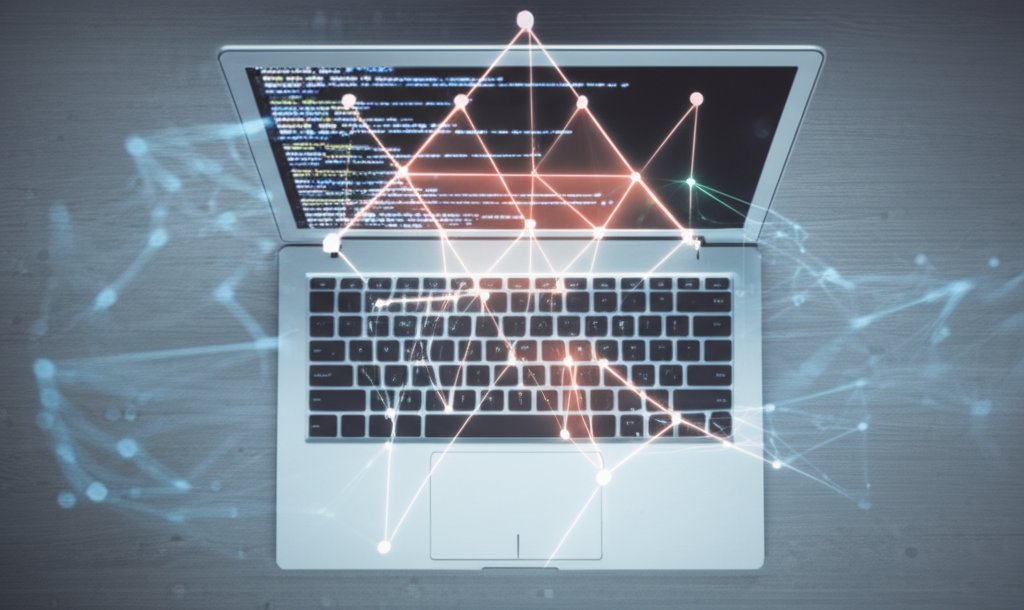How AI-Powered Code Review Boosts Your Small Business’s Application Security (No Tech Degree Required)
As a small business owner, you’re constantly juggling multiple priorities. Your digital presence? Absolutely essential. Customer data? Critically important. But application security? That often feels like a highly technical, complex challenge best left to large corporations with dedicated IT teams. You might be running an e-commerce store, a website that collects customer inquiries, or even a custom tool that helps you manage your operations. These are all “applications,” and they’re the digital heart of your business.
The truth is, cybercriminals don’t discriminate based on business size. In fact, small businesses are often seen as easier targets. A data breach, a website hack, or customer data theft can be devastating, leading to financial penalties, loss of customer trust, and reputational damage that could take years to recover from. So, how do you protect these vital digital assets without needing a computer science degree or an unlimited security budget?
You might be thinking, “This sounds like another expensive, complex IT solution that’s beyond my reach.” Or perhaps, “Can I really trust a machine to protect my critical data?” These are valid concerns. However, the reality of modern AI-powered code review is that it’s designed specifically to overcome these barriers. It’s about delivering enterprise-level security accessibly and affordably, democratizing digital protection for businesses just like yours.
That’s where AI-powered code review comes in. It’s a game-changer, leveling the playing field and offering sophisticated protection in a way that’s accessible and incredibly effective. Let’s demystify it together.
What You’ll Learn
By the end of this article, you’ll have a clear, non-technical understanding of:
- Why application security is no longer just an “IT problem” but a critical business imperative for you.
- What “code review” actually means and why it’s so important for your applications’ safety.
- How Artificial Intelligence (AI) is transforming this process, making it faster, more reliable, and more affordable.
- The concrete benefits AI-powered code review offers your small business, from preventing costly breaches to saving valuable time and resources.
- Key considerations to keep in mind when thinking about this technology, ensuring you make informed decisions.
Prerequisites: Your Business in the Digital Age
You don’t need any technical skills to understand this topic, but there are a few “prerequisites” in terms of your business operations. If your small business:
- Has a public-facing website, e-commerce store, or customer portal.
- Uses custom software, internal tools, or third-party web applications.
- Collects or stores any customer data (names, emails, payment info, etc.).
- Relies on online services to operate and serve your customers.
…then this article is definitely for you. You’ve already got the most important prerequisite: a digital footprint that needs protecting.
How AI-Powered Code Review Safeguards Your Applications: A Step-by-Step Approach
Let’s break down how this powerful technology actually works to build a stronger digital security posture for your business.
Step 1: Understanding “Code” and Traditional Review
Think of your application’s “code” as the incredibly detailed recipe or set of instructions that tells it exactly what to do. Every click, every data entry, every transaction on your website is governed by these instructions. If there’s a mistake in the recipe—a missing ingredient or a wrong step—it could lead to a “bug” (the app doesn’t work right) or, more dangerously, a “security flaw” (a weakness a hacker could exploit).
Traditionally, “code review” meant human developers painstakingly reading through these instructions, line by line, looking for errors, inefficiencies, or security vulnerabilities. It’s a vital process, but it’s also slow, expensive, and prone to human oversight. Imagine proofreading a novel for every single typo and grammatical error—you’re bound to miss some, aren’t you?
Step 2: AI Becomes Your Smart Security Assistant
This is where AI steps in. AI-powered code review tools are like incredibly smart, tireless assistants. Instead of a human manually reviewing every line, the AI scans your application’s code automatically. It uses advanced pattern recognition—think of it learning from millions of existing code examples, good and bad—to quickly identify potential issues.
How it works, simply put, is that the AI acts like a super-fast, hyper-vigilant detective. It looks for known weaknesses, coding errors that lead to vulnerabilities, and even suspicious patterns that might indicate a future problem. Once it finds something, it doesn’t just flag it; it often suggests specific ways to fix the problem, making your developers’ jobs much easier.
For you, the small business owner, this means you don’t need to understand complex code or security jargon. The AI tools are designed with intuitive dashboards that clearly present findings in plain language. They automate the scanning process, reducing the need for manual oversight, and provide actionable, easy-to-understand reports that your existing developer or IT support can quickly act upon. It’s about getting sophisticated security insights without needing a dedicated cybersecurity team.
Step 3: Transforming Your Security Posture Early and Often
The real magic happens in how this proactive approach powered by AI reshapes your application security:
- Catching Threats Early & Automatically: AI can spot common application vulnerabilities—those weaknesses hackers exploit for data breaches or website takeovers—before they ever make it into your live application. It’s like having a vigilant guard present from the very beginning of your application’s life cycle, preventing problems rather than reacting to them. Consider an online boutique: AI could identify a flaw in their new product upload feature, preventing a hacker from injecting malicious code before it ever reaches their customers. Or think of a local service provider with a custom booking app; AI can flag a weakness that might expose client appointment details, safeguarding privacy and trust.
- Faster & More Consistent Security Checks: AI works with incredible speed and tireless consistency. It ensures every line of code is reviewed thoroughly, reducing the chances of human error or oversight due to fatigue. This means your developers can get new features out faster, knowing they’ve been scanned for security.
- Saving Time and Money for Your Business: For small businesses, this translates directly into significant cost savings. Finding and fixing security issues early is dramatically cheaper and less disruptive than dealing with a breach later. A single breach can cost your business tens of thousands, if not hundreds of thousands, of dollars. For a small consulting firm developing an internal client management tool, discovering and fixing a security vulnerability during development—thanks to AI—costs pennies compared to the potential millions a data breach could incur if that flaw went live.
- Leveling the Playing Field: AI empowers small businesses to achieve a stronger application security posture, often comparable to that of larger companies, even with limited internal resources or security staff. You don’t need to hire an army of security experts to get top-tier protection.
- Staying Ahead of New & Evolving Threats: Cyber threats are constantly changing. The good news is, AI tools are continuously updated and can learn to identify new types of vulnerabilities as they emerge, offering a more proactive and adaptive defense against sophisticated cybercriminals.
Pro Tip: Understand Your Digital Footprint
Take a moment to list all the applications and online services your business relies on. This helps you grasp the scope of what needs protecting. From your website to your CRM, each is a potential entry point for attackers.
Common Issues & Solutions: AI is a Partner, Not a Replacement
While AI-powered code review is incredibly powerful, it’s important to approach it with a clear understanding of its role. It’s a sophisticated tool designed to assist humans, not entirely replace them.
Issue: Over-Reliance on AI Suggestions
You might think, “If AI finds it, it must be right, and I don’t need to worry!” However, AI, while smart, doesn’t always understand the unique business logic or specific context of your application. It can sometimes flag “false positives” (issues that aren’t actually problems) or miss very nuanced security risks that require human intuition.
Solution: The Human Touch Still Matters
It’s crucial for your developers or IT professionals to review and validate AI-generated feedback. They bring their understanding of your business and application’s specific needs to the table, ensuring that fixes are appropriate and that genuinely critical issues aren’t overlooked. Think of AI as providing a highly intelligent first pass, and your team as the expert editors.
Issue: Choosing the Wrong Tool for Your Business
With many AI-powered code review tools emerging, how do you know which one is right for your small business?
Solution: Focus on Integration and Simplicity
Instead of just looking for the most feature-rich option, consider how easily a tool integrates with your existing development processes and the comfort level of your team. Does it fit seamlessly into how your developers already work? Is it simple enough for your IT provider to manage without extensive training? The best tool is often one that enhances your current workflow without creating new complexities.
Advanced Tips for a Safer Digital Future
Once you understand the basics, here are a few advanced considerations to further bolster your application security strategy:
- Embrace Continuous Security Learning: Just as AI tools are constantly learning, so should your approach to cybersecurity. Staying informed about basic best practices and emerging threats empowers you to ask smarter questions of your developers and vendors.
- Beyond Initial Scans: AI-powered code review is fantastic for catching issues early. But a truly robust security posture involves ongoing vigilance. Consider asking about other security measures like regular updates, API security, security testing beyond code review, like penetration testing strategies, and strong data encryption.
- Ask “Why?”: Don’t be afraid to ask your developers or IT provider “why” certain security measures are in place or “how” a specific AI tool benefits your application. Understanding their reasoning helps you make more informed business decisions about security investments.
Pro Tip: Security as a Feature, Not an Afterthought
Encourage your developers or software vendors to treat security as an integral part of development from day one, not something tacked on at the end. This “security by design” approach saves tremendous headaches and costs down the line.
Next Steps: What Your Small Business Can Do
You don’t need to become a cybersecurity expert overnight, but you can certainly take action to significantly enhance your application security:
- Talk to Your Developers or IT Provider: Have an open conversation. Ask them if they’re currently using AI-powered code review tools or if they’re considering them. Inquire about how they ensure the security of your applications and how this technology could further strengthen your defenses.
- Prioritize Secure Development: Make it clear to anyone building or maintaining your applications that security is a top priority. Building security into every stage of application development is always more effective and cost-efficient than trying to fix vulnerabilities after the fact.
- Stay Informed: Continue to learn about cybersecurity best practices. A little knowledge goes a long way in protecting your business from the ever-evolving landscape of online threats.
Conclusion: A Smarter, Safer Future for Application Security
The digital world can feel like a minefield for small businesses, but AI-powered code review is truly a beacon of hope. It makes sophisticated application security accessible, efficient, and proactive, allowing you to protect your digital assets, customer data, and hard-earned reputation without breaking the bank or requiring deep technical expertise. By embracing this technology and asking the right questions, you’re not just securing your applications; you’re securing the future of your business.
Try it yourself and share your results! Follow for more tutorials.




